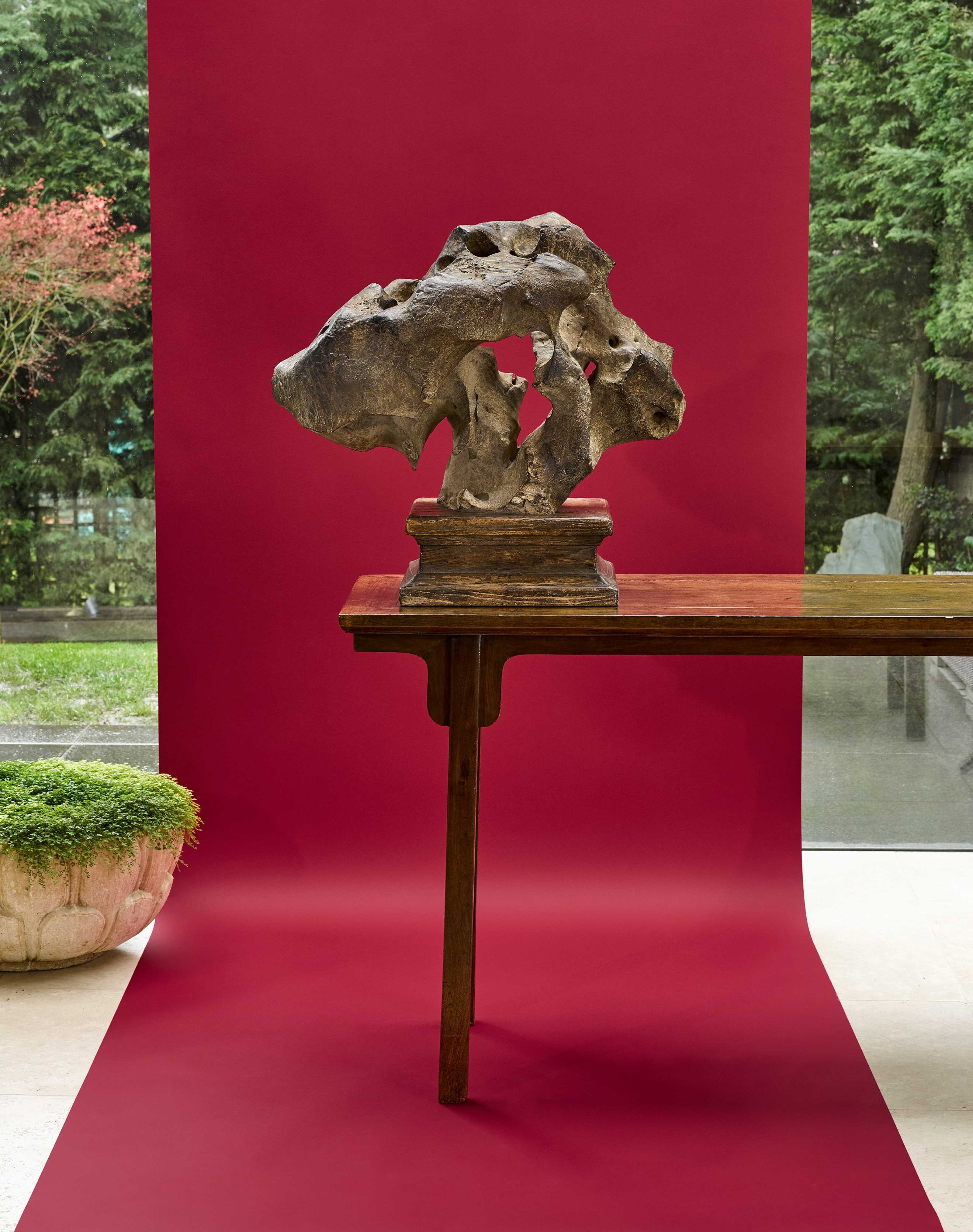Channeling Immortality: Chinese Scholars’ Rocks

In China, the literati have appreciated scholars’ rocks (gongshi) for almost 2,000 years. Often installed in studios or gardens, scholars used these objects to draw inspiration from the natural world as they were understood to be miniature representations of mountains. The eminent Tang poet Bai Ju-yi (772–846) stated: “The famous mountains, the hundred caves and valleys are all presented by these rocks. Sit there and you can see at a glance a hundred hills spread over a thousand miles in a rock the size of a fist.”
This exhibition featured three classic examples of scholars’ rocks. The two larger rocks would have served as accents in a scholar’s garden. They are meant to resemble the legendary mountainous isles where Taoist immortals were believed to live. Scholars placed smaller rocks on their desks. The abstract form of the rock on view would have been associated with a powerful, auspicious dragon that dwelled in cloud-covered mountains.
Taoists believed that cosmic energy coalesced to form these “fantastic rocks,” as they were once known, and regarded them as microcosms of the mountain paradises where immortals dwelled. To channel the rocks’ otherworldly force, scholars would gaze at such stones in meditation and transport themselves to the mountains of the immortals in attempts to attain immortality or “continuous regeneration.” Taoism focuses on living in harmony with the Tao (pronounced dow) — literally meaning The Way, the origin of all creation, and the force that lies behind the functions and changes of the natural world — with the ultimate goal of achieving immortality.
Scholars’ rocks were typically found in nature with the finest examples collected from lakes or remote mountains. The aesthetic criteria for judging the quality of scholars’ rocks were intimated in literature from the Tang (618-907) and Song (960-1279) dynasties. The mid-19th century book, Short Chats on Rocks, by Liang Jiu-tu, distinctly outlined such qualities noting, “…if the rock does not seem like a painting by the powers of nature, then you shouldn’t choose it.”
Also on view are intricately rendered mountainscape paintings that recall the stones’ textures and forms as well as meditative traditions. Contemporary painters Hsia I-fu and Lee Chun-yi paint mountains as a contemplative process, inspiring viewers to make the same mental journey to the mountains as Chinese scholars have done for thousands of years.